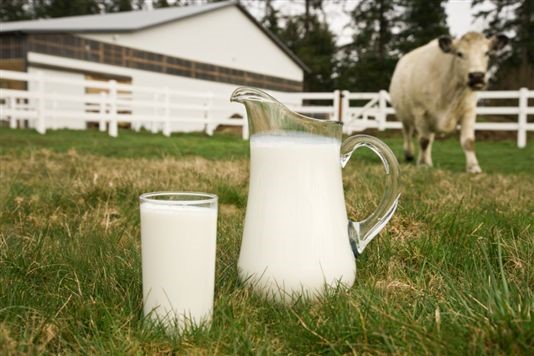Should we be worried about unpasteurised food and drink?

As an award-winning producer withdraws batches of its unpasteurised cheese due to a potential health risk, we look at the arguments surrounding 'raw' dairy products.
Six batches of unpasteurised cheese made by award-winning Scottish producer Loch Arthur Creamery has been recalled after it was discovered some samples contained a food-poisoning bacteria.
The affected product is the company’s Criffel semi-soft cheese, which was cited for its exceptional flavour when the company won Food Producer of the Year at the 2011 BBC Radio 4 Food & Farming Awards.
Tests carried out by Dumfries and Galloway Council found high levels of Listeria monocytogenes bacteria. This can affect pregnant women, very young children, older adults and people with weakened immune systems. In rare cases, it can lead to miscarriage, septicaemia and meningitis.
Listeria bacteria can also be found in the likes of cooked sliced meats, smoked salmon, pre-packed sandwiches and pâté.
Illness can be caused by refrigerated food being left out, food that’s exceeded its use by date and cross-contamination between foods.
But, as well as listeria bacteria, unpasteurised milk and cheese can also contain harmful E. coli, salmonella and campylobacter. However, there haven’t been any incidences of illness linked to either since 2002.
The changing taste of cheese
There was an outbreak of listeria in the late 1970s that was traced back to unpasteurised cheese. As a result, much of the industry retreated to the safety of pasteurisation. For example, Stilton can now only be made using pasteurised milk. But compare it to Stichelton, which is made to much the same recipe but using unpasteurised milk, and the taste is very different.
The number of small-scale cheese producers is growing, and many have adapted older recipes, using unpasteurised milk to create unique flavours and textures. Many of these cheeses are award winners.
Court battle coming
Unpasteurised food and drink hit the headlines recently for a different reason following the FSA’s decision to take court action against Selfridges and Hook and Son, farmers from Hailsham in East Sussex, for installing a ‘raw milk’ vending machine in Selfridges’ Oxford Street store in 2011.
Unpasteurised cow’s milk can only be bought from farms and farmers’ markets in England, Wales and Northern Ireland. The Government proposed an outright ban three times between 1984 and 1997, but bowed to public pressure. It’s not allowed to be sold in Scotland.
Selfridges thought they had circumvented the law as the machine was essentially a ‘concession’ for the farmer. But the bending of the current rules, which also include online sales by farmers such as Hook and Son, has also prompted the FSA to launch a new consultation on the sale of raw milk.
Advocates of unpasteurised milk say it contains vitamins and enzymes which are destroyed by the pasteurisation process. But the comment from an unnamed 'dairy executive' in this story in The Grocer suggests many in the industry are fearful of what might happen to public confidence should there be a scare linked to milk. We wait to see whether the rules will be tightened.
 The taste test
The taste test
I went over to Borough Market to buy some unpasteurised milk from the Hook and Son stall for a blind taste test. At £3 for two pints, it certainly wasn't cheap, but would it taste better?
I also picked up a bottle of whole milk (blue top) from the local Co-op and a bottle of Jersey and Guernsey Gold Top.
I mistakenly thought the Gold Top was the unpasteurised, as I was expecting a richer, creamier taste given it had come virtually straight from the cow to my palate. Despite this mistake, I did prefer the taste of the unpasteurised milk, which had a distinct natural flavour, whereas the Gold Top tasted creamier but artificial, and the blue top just tasted insipid and watery in comparison.
At that price, I'm not sure I would drink it regularly, but it certainly gave me some food for thought. More importantly, a week later and I'm still in good health.
What do you think about unpasteurised food and drink? Do you buy it? Does it worry you? Let us know your thoughts in the Comments section below.
More on dairy
Comments
Do you want to comment on this article? You need to be signed in for this feature